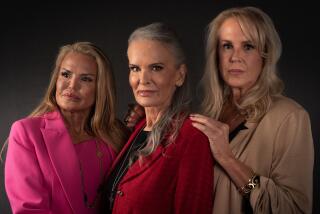THE SPIN / BILL BOYARSKY : THE O.J. SIMPSON MURDER TRIAL : A Calm Word Portrait of a Grisly Landscape
As told in the controlled, expressionless tones of Police Officer Robert Riske at the O.J. Simpson murder trial Thursday, the gore of the crime scene exceeded the speculations of the most lurid media.
Step by step, under the brisk questioning of Deputy Dist. Atty. Marcia Clark, Riske took us through the pools, spots and trails of blood where Nicole Brown Simpson and Ronald Lyle Goldman were stabbed to death.
This was much more powerful that what we have seen or read since the murders last June.
Everyone seems to have an opinion on this case. Will the evidence, the full story, change views that have been molded by months of news coverage and spin by lawyers, commentators and anonymous sources?
*
Riske was the first officer to see the bodies. He also discovered the Simpsons’ small children sleeping in their rooms upstairs. He and his partner awakened the children, dressed them, and put them in the patrol car that took them to the West Los Angeles police station. The little girl, Sydney, told him her father was O.J. Simpson.
He spoke in the unemotional manner of LAPD Academy grads. His face was unreadable except for his eyes, which looked sad as he recalled the death scene and the children.
Riske gave the impression of frankness. When Clarke asked him if he had been trained at the academy on preservation of a crime scene, he said “they kind of gloss over (that), they don’t really train you.”
His training, he said, came on the street under the direction of a training officer. In his four years as a cop, Riske said, he has preserved about 20 crime scenes, about 15 of them murders.
The reality of the crime scene, as related by Riske, was a much bloodier place than previous accounts indicated. A pool of blood flowed from Nicole’s body toward the sidewalk. Blood was on several parts of a rear gate; on the paws and legs of Nicole’s dog; on the walkway leading to the condo, and in other places.
A lot of the dispute in the trial so far has been about the amount of blood available for sampling for the DNA testing that is the linchpin of the prosecution’s case. As the prosecution and defense battled over custody of small amounts of blood, it was easy to get the impression from the public debate of a shortage of testable blood.
There was a lot of blood around, according to Officer Riske’s testimony, although the volume doesn’t answer the key question of whether there was enough of the killer’s blood for a convincing DNA identification.
Putting the DNA question aside, the blood still will play a significant role in the case. Riske said he saw just one set of bloody footprints in the front, side and back of the condo. This was a blow to those who theorize that the murders were committed by multiple killers.
He also told in detail about how he and his partner stayed away from blood drops. This is crucial testimony for the prosecution. The defense is arguing that shoddy policing at the crime scene contaminated the blood so badly that DNA tests can’t be trusted.
*
I thought this was pretty strong testimony. But I had been warned by another reporter to be cautious. He said the nine African American jurors might not share my enthusiasm for police testimony.
Dennis Schatzman of the Los Angeles Sentinel, a weekly paper that serves the African American community, told me the black jurors “have a better understanding” of the criminal justice system than white jurors, or white reporters.
“Black jurors are thinking differently about the evidence than whites do,” Schatzman said. “That’s how you have to look at this case. It is not as much racism, as how the races perceive the criminal justice system differently.”
With African Americans, he said, the prosecution has “got to have it nailed down” before black jurors vote a guilty verdict.
In other words, they’ll bring a “show me” attitude to the deliberations, one that may well be shared by their colleagues, one of whom is white, one Latino and one who is part Native American.
Thursday was a solid day for the prosecution. Johnnie Cochran Jr., with more than a quarter of a century in the courtroom, couldn’t shake four-year-cop Robert Riske.
But it was just a start toward building a case strong enough to hold up in the court as well as the media.
More to Read
Sign up for Essential California
The most important California stories and recommendations in your inbox every morning.
You may occasionally receive promotional content from the Los Angeles Times.










